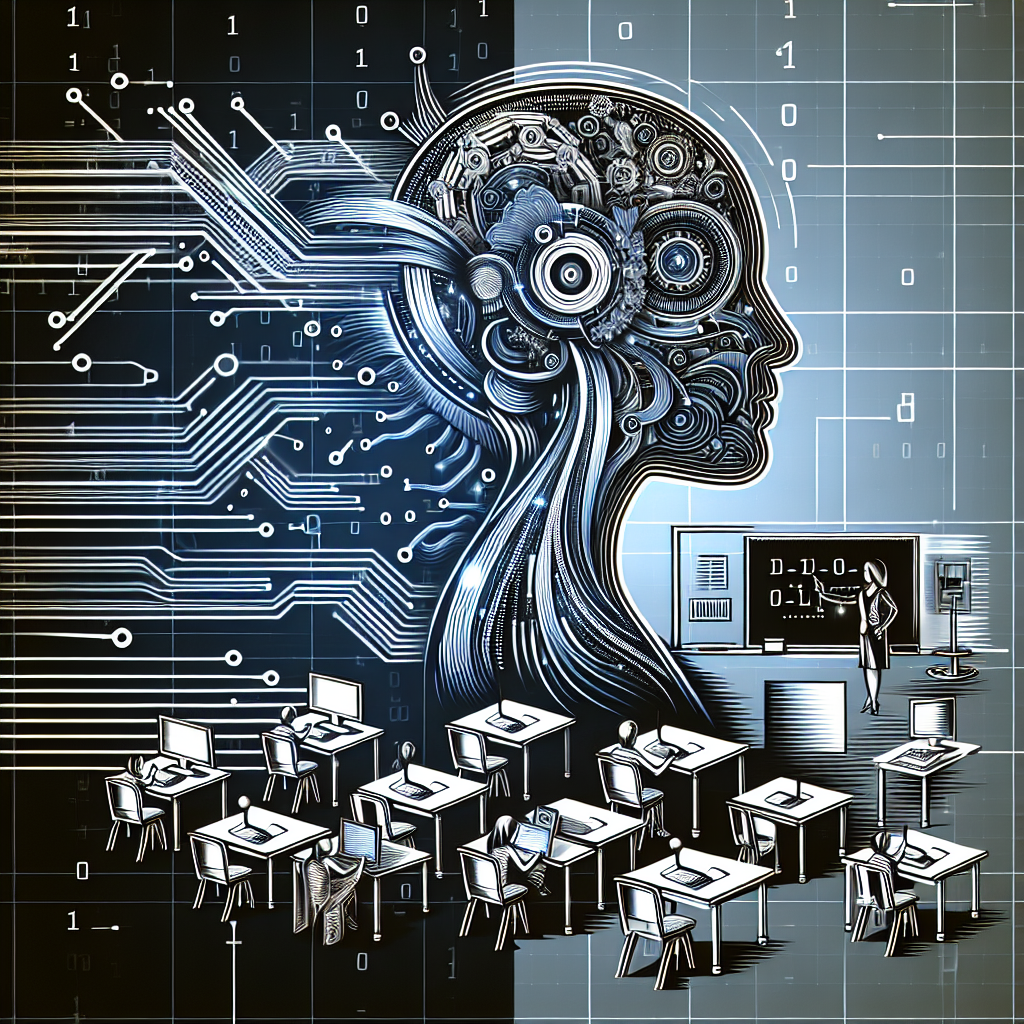In recent years, the integration of artificial intelligence (AI) in education has become a hot topic of discussion. One of the innovative ways in which AI is being used in education is through the flipped classroom model. This model flips the traditional classroom structure by having students engage with instructional content outside of class, typically through online videos or readings, and then using class time for more interactive and engaging activities such as discussions, group work, and hands-on projects.
AI technology can enhance the flipped classroom model by providing personalized learning experiences for students, automating assessments, and providing real-time feedback to both students and teachers. In this article, we will explore the benefits of using AI in the flipped classroom model, as well as some commonly asked questions about this approach.
Benefits of AI in the Flipped Classroom Model:
1. Personalized Learning: AI technology can analyze student data and learning patterns to create personalized learning paths for each student. This allows students to learn at their own pace and focus on areas where they need the most help. By tailoring instruction to individual students, AI can help improve student engagement and academic performance.
2. Automated Assessments: AI can automate the process of assessing student learning, saving teachers time and allowing them to focus on providing more targeted feedback to students. AI can grade assignments, quizzes, and exams quickly and accurately, providing instant feedback to students on their progress. This can help students identify areas where they need to improve and take corrective action.
3. Real-Time Feedback: AI technology can provide real-time feedback to both students and teachers, allowing for more timely interventions when students are struggling. For example, AI-powered educational platforms can track student progress and alert teachers when a student is falling behind or struggling with a particular concept. This allows teachers to provide additional support to students before they fall too far behind.
4. Enhanced Engagement: By using AI to create interactive and engaging learning experiences, students are more likely to stay motivated and focused on their studies. AI-powered educational platforms can include gamified elements, simulations, and virtual reality experiences to make learning more fun and engaging for students. This can help increase student retention and improve academic performance.
5. Data-Driven Insights: AI technology can analyze large amounts of data to provide teachers with valuable insights into student learning patterns and performance. By tracking student progress over time, teachers can identify trends and patterns that can help them better understand how students learn and what teaching strategies are most effective. This data can inform instructional decisions and help teachers tailor their teaching to meet the needs of individual students.
FAQs about AI in the Flipped Classroom Model:
1. How can AI technology be used to create personalized learning experiences in the flipped classroom model?
AI technology can analyze student data, such as quiz scores, assignment submissions, and online interactions, to create personalized learning paths for each student. By identifying areas where students are struggling and providing targeted resources and support, AI can help students learn at their own pace and focus on areas where they need the most help.
2. How does AI automate assessments in the flipped classroom model?
AI technology can automate the process of grading assignments, quizzes, and exams, saving teachers time and providing instant feedback to students. By using algorithms to assess student responses, AI can grade assignments quickly and accurately, allowing students to see their results immediately and take corrective action if needed.
3. How does AI provide real-time feedback to students and teachers in the flipped classroom model?
AI-powered educational platforms can track student progress and performance in real-time, providing alerts to teachers when a student is struggling or falling behind. This allows teachers to intervene quickly and provide additional support to students before they fall too far behind. AI can also provide students with instant feedback on their work, helping them identify areas where they need to improve.
4. How can AI technology enhance student engagement in the flipped classroom model?
AI technology can create interactive and engaging learning experiences for students, using gamified elements, simulations, and virtual reality experiences to make learning more fun and interactive. By providing students with hands-on activities and real-world examples, AI can help increase student engagement and motivation to learn.
5. What data-driven insights can AI technology provide to teachers in the flipped classroom model?
AI technology can analyze large amounts of student data to provide teachers with valuable insights into student learning patterns and performance. By tracking student progress over time, teachers can identify trends and patterns that can help them better understand how students learn and what teaching strategies are most effective. This data can inform instructional decisions and help teachers tailor their teaching to meet the needs of individual students.
In conclusion, AI technology has the potential to revolutionize the flipped classroom model by providing personalized learning experiences, automating assessments, providing real-time feedback, enhancing student engagement, and offering data-driven insights to teachers. By leveraging the power of AI, educators can create more effective and engaging learning experiences for students, leading to improved academic performance and student outcomes. As AI continues to evolve and improve, we can expect to see even more innovative uses of this technology in education, transforming the way we teach and learn.

